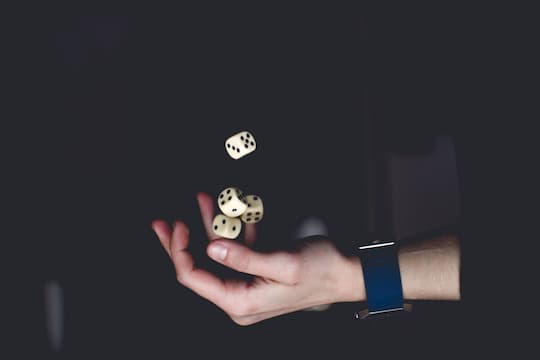Loss aversion is a psychological bias in which people prefer to avoid losses more than getting equivalent gains.
The loss aversion bias in psychology is a finding from Nobel Prize-winning research that reveals the strange ways people make decisions in risky situations.
Here is a simple example of loss aversion: first, I give you $10 free and then ask would you bet that $10 on the flip of a coin if you stood to win $20?
So you’ve got a 50 percent chance of losing $10 and a 50 percent chance of winning $20.
This seems like a good bet to take and yet studies on loss aversion show that people tend not to take it.
The reason is loss aversion: people hate to lose more than they love to win.
Loss aversion and changes in wealth
Before Kahneman and Tversky (1979) published their ground-breaking research on loss aversion in psychology, risky decisions were usually analysed by thinking about the total wealth involved.
When you look at this bet in the context of the total wealth it makes sense to gamble.
It’s obvious you’ve got more to gain than you have to lose.
So, why do people tend not to?
What Kahneman and Tversky suggested was that, in fact people think about small gambles like this in terms of losses, gains and neutral outcomes.
It is actually the changes in wealth on which people base their decision-making calculations and it’s here that the loss aversion bias kicks in.
But that doesn’t completely explain why people don’t take the bet.
There’s a further piece to the puzzle.
It turns out that at low levels of risk, such as this coin flip situation, people are more averse to the loss of $10 than they are attracted by the chance of winning the $20.
Studies of loss aversion have shown that people actually need the chance of winning $30 before they’ll consider risking their own $10.
Loss aversion vs. risk seeking
Just as people show illogical loss aversion in some circumstances, they also show risk-seeking behaviour in other circumstances.
Imagine you have to choose between these two options.
The first is that you have an 85 percent chance of losing $1,000 along with a 15 percent chance of losing nothing.
The second is a 100 percent chance of losing $800.
Not much of a choice, right!?
You’re between a rock and hard place.
Still, sometimes we have to cut our losses.
According to the maths you should choose the sure loss of $800, but most people don’t.
Most people choose to gamble, simply because of loss aversion.
So when the potential for loss is there, suddenly people prefer to take a risk.
They’ve become risk seekers, motivated by loss aversion.
Yet, when there’s the potential for gains, people display loss aversion.
Framing bias
This way of thinking about how people behave in risky situations in psychology, which Kahneman and Tversky called Prospect Theory, has a second major insight that follows on from the risk aversion and risk seeking described above.
What they realised was that people behaved in different ways depending on how the risky situation was presented.
Remember that if a risk is presented in terms of losses, people will be more risk seeking, and if it’s expressed in terms of gains, people will be more risk averse.
Their classic example involves this fictional situation:
“Imagine your country is preparing for the outbreak of a disease expected to kill 600 people.
If program A is adopted, exactly 200 people will be saved.
If program B is adopted there is a 1/3 probability that 600 people will be saved and a 2/3 probability that no people will be saved.”
Here, the risk is presented in terms of gains so people tend to choose option A (72%), which is, in fact, worse.
Here’s the same problem but this time presented in terms of losses:
“Imagine your country is preparing for the outbreak of a disease expected to kill 600 people.
If program A is adopted, exactly 400 people will die.
If program B is adopted there is a 1/3 probability that no one will die and a 2/3 probability that 600 people will die.”
Now most people (78 percent) choose B because the problem is presented in terms of losses.
People suddenly prefer to take a risk.
In fact, if you look at both the situations you’ll see that, mathematically, they’re identical and yet people’s decision is heavily influenced by the way the problem is framed to target the loss aversion bias.
This effect has been termed preference reversal.
Loss aversion in the real world
After considering these sorts of problems for a few minutes, it’s easy to wonder what all of this abstract reasoning about loss aversion has to do with the real world.
Quite a lot, argue Kahneman and Tversky.
The Nobel Prize committee agreed, awarding it to Kahneman for his work on prospect theory, of which loss aversion forms a part.
Everyday life involves endless ‘gambles’ and betting examples are just one of the easiest ways to understand how humans make decisions in risky situations.
Certainly Kahneman and Tversky’s work on loss aversion has plenty to say about some of the apparently strange decisions people make in everyday life.
So, next time you’re agonising over a decision in terms of losses, try this simple trick.
Re-imagine the whole decision in terms of gains.
I can’t promise it will help you make your decision, but at least you’ll better understand Kahneman and Tversky’s insightful research on loss aversion.
Humans are not as rational as we would like to think.
.

